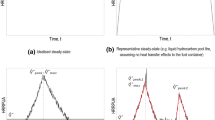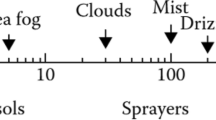Abstract
Layer of protection analysis (LOPA) was conducted on the fire hazard of LPG filling stations. Scenarios were developed for jet fire, pool fire, and boiling liquid expanding vapor explosion (BLEVE). For each scenario, independent protection layers (IPLs) of the LPG station were identified and their frequencies were estimated. Risk matrix to determine the risk category was constructed, combining consequence and frequency of each scenario. Three additional IPLs were considered, such as a firewall between the tank lorry parking area and LPG facility, water deluge system for tank lorry, and excess flow shutdown valve for liquid pipeline to stop unexpected excess flow. Adding such IPLs could markedly reduce the risk to the facility.
Similar content being viewed by others
References
Korea Ministry of Environment, Development of implementation measures on off-site consequence assessment, Government Report, 11-1480000-001311-01 (2014).
Korea Ministry of Environment, Development of implementation measures of Korean risk management plan, Government Report, 11-1480802-000007-01 (2014).
Korea Gas Safety Corp., Statistics on high pressure gas, 72 (2014).
S. Jung, Korean J. Chem. Eng., 33(1), 1 (2016).
R. Singh, H. J. Lee, A.K. Singh and D.P. Kim, Korean J. Chem. Eng., 33(8), 2253 (2016).
S. Tong, Z. Z. Wu, R. J. Wang and Y.Q. Duo, Korean J. Chem. Eng., 33(8), 2291 (2016).
CCPS, Layer of protection analysis: Simplified process risk assessment, New York, 71 (2001).
R. E. Melchers and W.R. Feutrill, J. Reliability Eng. Sys. Safety, 74, 283 (2001).
K. Park, S.M. Mannan, Y.-D. Jo, J.-Y. Kim, N. Keren and Y. Wang, J. Hazard. Mater., 137(1), 62 (2006).
D.A. Crowl and J. F. Louvar, Chemical process safety: Fundamentals with applications, Prentice-Hall, New Jersey, 2nd Ed., 114 (2001).
F. P. Lees, Loss prevention in the process industries: Hazard identification, assessment and control, Elsevier Butterworth-Heinemann, 3rd Ed., 15/7 (2005).
D.A. Crowl and J. F. Louvar, Chemical process safety: Fundamentals with applications, Prentice-Hall, New Jersey, 2nd Ed., 133 (2001).
F. P. Lees, Loss prevention in the process industries: Hazard identification, assessment and control, Elsevier Butterworth-Heinemann, 3rd Ed., 16/214 (2005).
CCPS, Guideline for chemical process quantitative risk analysis, 2nd Ed., New York, 224 (2000).
CCPS, Guideline for chemical process quantitative risk analysis, 2nd Ed., New York, 268 (2000).
F. P. Lees, Loss prevention in the process industries: Hazard identification, assessment and control, Elsevier Butterworth-Heinemann, 3rd Ed., 16/188 (2005).
CCPS, Guideline for chemical process quantitative risk analysis, 2nd Ed., New York, 204 (2000).
D.A. Crowl and J. F. Louvar, Chemical process safety: Fundamentals with applications, Prentice-Hall, New Jersey, 2nd Ed., 504 (2001).
Korea Gas Safety Corp., LPG Station Risk Assessment Report (2003).
CCPS, Guidelines for process equipment reliability data - with data tables, New York, 33 (1989).
AEA/CS/HSE R1403, BLEVE probability of an LPG road tanker during unloading (1995).
Author information
Authors and Affiliations
Corresponding author
Rights and permissions
About this article
Cite this article
Park, K. Simplified risk assessment on fire hazard of LPG filling station. Korean J. Chem. Eng. 34, 642–650 (2017). https://doi.org/10.1007/s11814-016-0325-x
Received:
Accepted:
Published:
Issue Date:
DOI: https://doi.org/10.1007/s11814-016-0325-x




